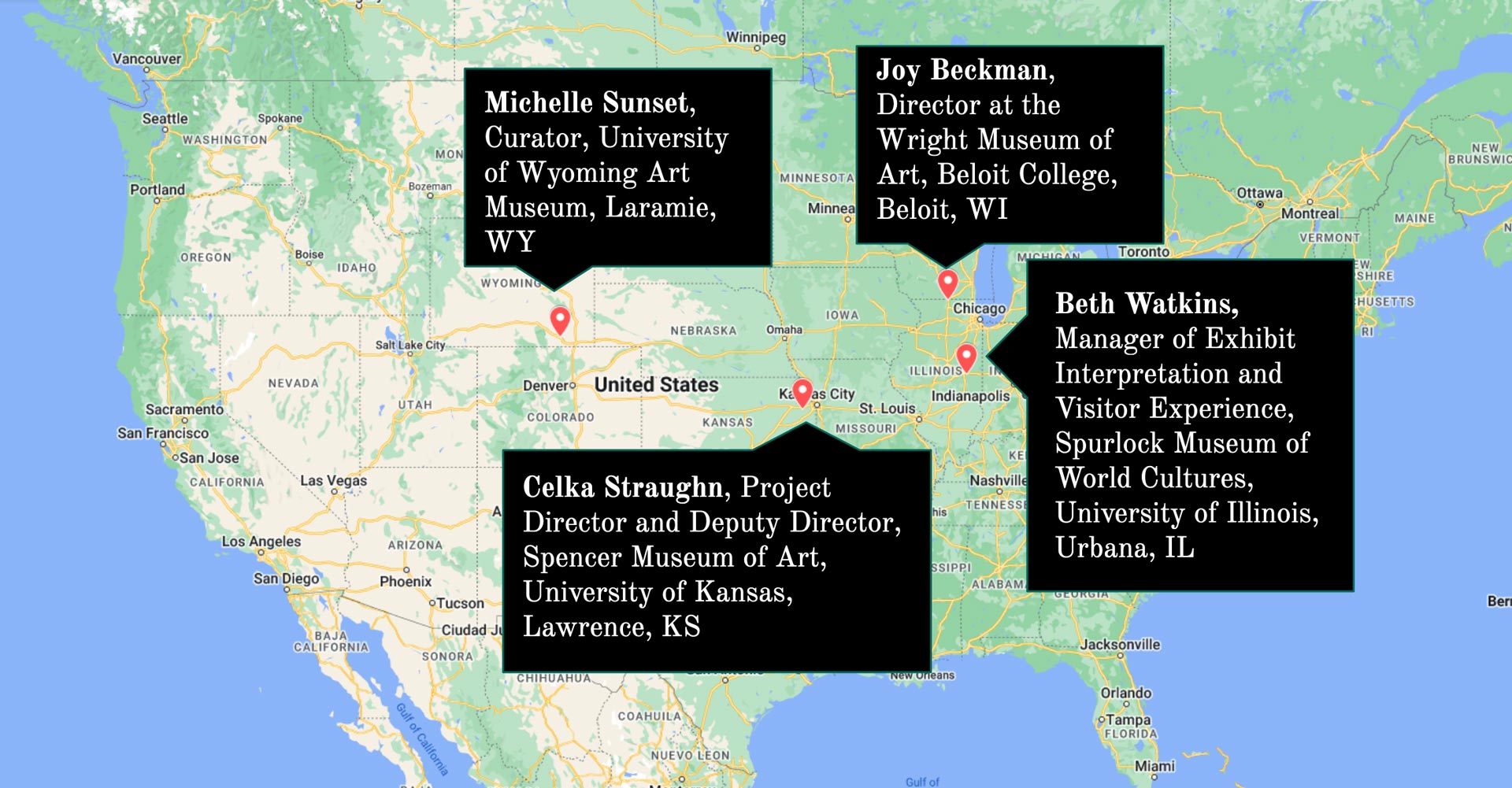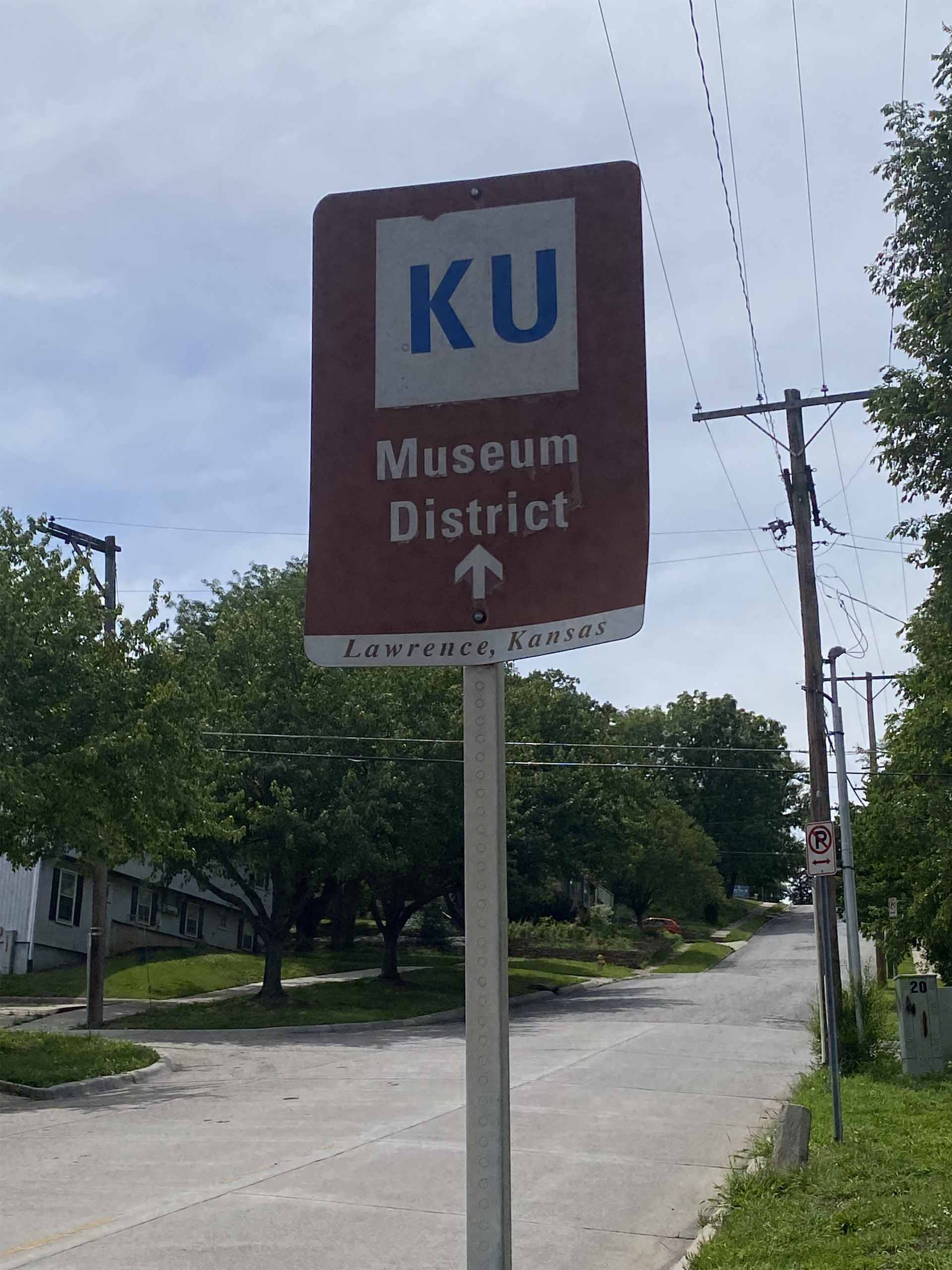
Spurlock Staff at the Association of Academic Museums and Galleries
- Post Date: 12/20/2023
- Author: Beth Watkins, Manager of Exhibit Interpretation and Visitor Experience
- Reading Time: 4 minute read
This summer, I had the opportunity to share some of Spurlock’s recent exhibit work at the conference of the Association of Academic Museums and Galleries. Hosted by the University of Kansas in Lawrence, this year’s conference focused on the theme “Opening Up: Creating New Field Guides to Trust, Service, and Responsibility.” Several hundred staff from museums and galleries at higher education institutions across the US gathered to discuss these big goals that are being undertaken across the museum field, with a focus on the particular audiences we serve on campuses and in college towns.
My presentation was part of a panel called “Collective Curating: Collaboration and Community.” Four of us from different campuses talked about projects at our respective institutions that rely on new approaches to bringing in different kinds of expertise and viewpoints. The University of Wyoming Art Museum is working on an exhibit called The New West (external link) with guest curator and Indigenous artist Robert Martinez to incorporate Indigenous voices, contextualize landscapes with historical perspectives, and examine the collecting of art of the American West. At the Wright Museum of Art at Beloit College, a small staff is taking on a similar project with their inherited collections by using student input and pairing these objects with new acquisitions that pose different interpretations. University of Kansas colleagues used community input to redevelop galleries with the goals of incorporating more learning styles, a greater variety of artworks, and interdisciplinary access points.
I ended the session with a discussion of what our staff learned from working on the 2021–2022 collaborative exhibit Sewn in Memory: AIDS Quilt Panels of Central Illinois. Unlike the other panelists’ projects, our exhibit developed directly from a request from the community and featured artifacts on loan from them (and were not part of Spurlock’s collections). Sewn in Memory was the idea of members of the Greater Community AIDS Project (external link) and grew to involve a class from History, a class from Journalism, and Illinois Public Media.
Overall, our panel sparked some great questions and feedback in the audience. Clearly our field is interested in trying to work in new ways, and campuses are often a supportive and creative environment for experimenting and facilitating new partnerships. Museum professionals were eager to hear about concrete processes and advice for how to actually begin and make progress in these important but often unfamiliar projects. Hearing the how-to from people who work in museums like ours is so helpful. Almost every time I talk about Sewn in Memory, an emotional response follows, and this setting was no different: primary sources and sacred objects tell stories that reach us across time and space in powerful ways.
-
- Share:
- Subscribe to Newletter
- Giving



